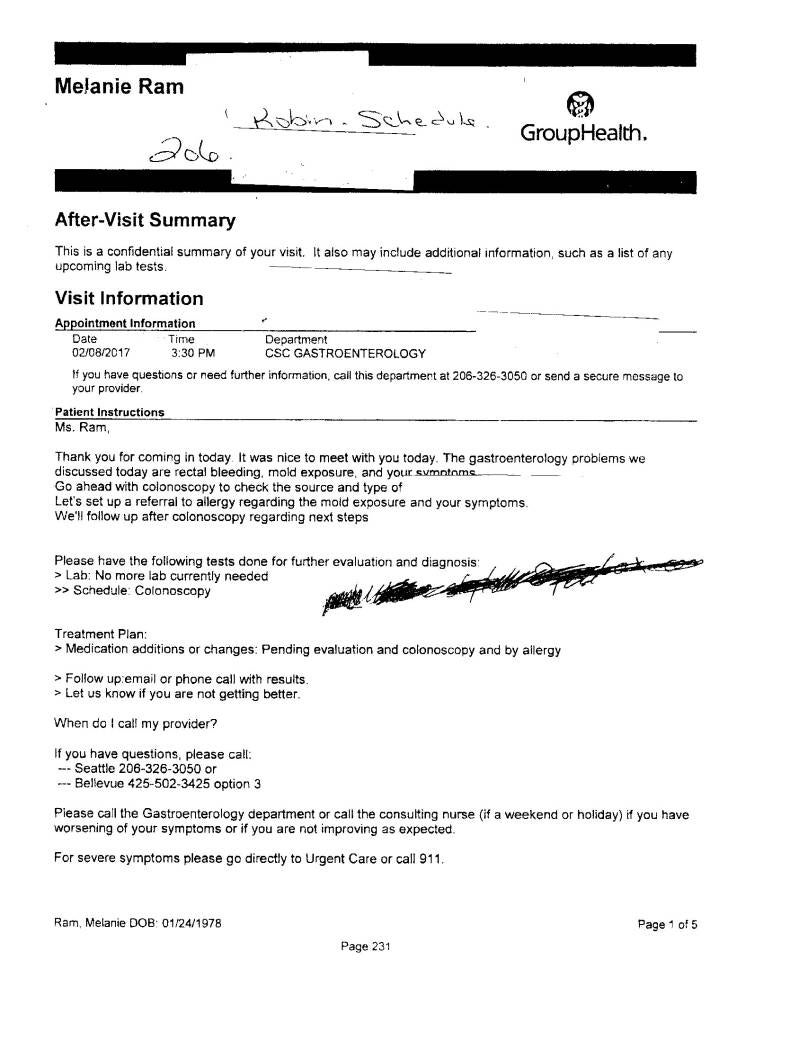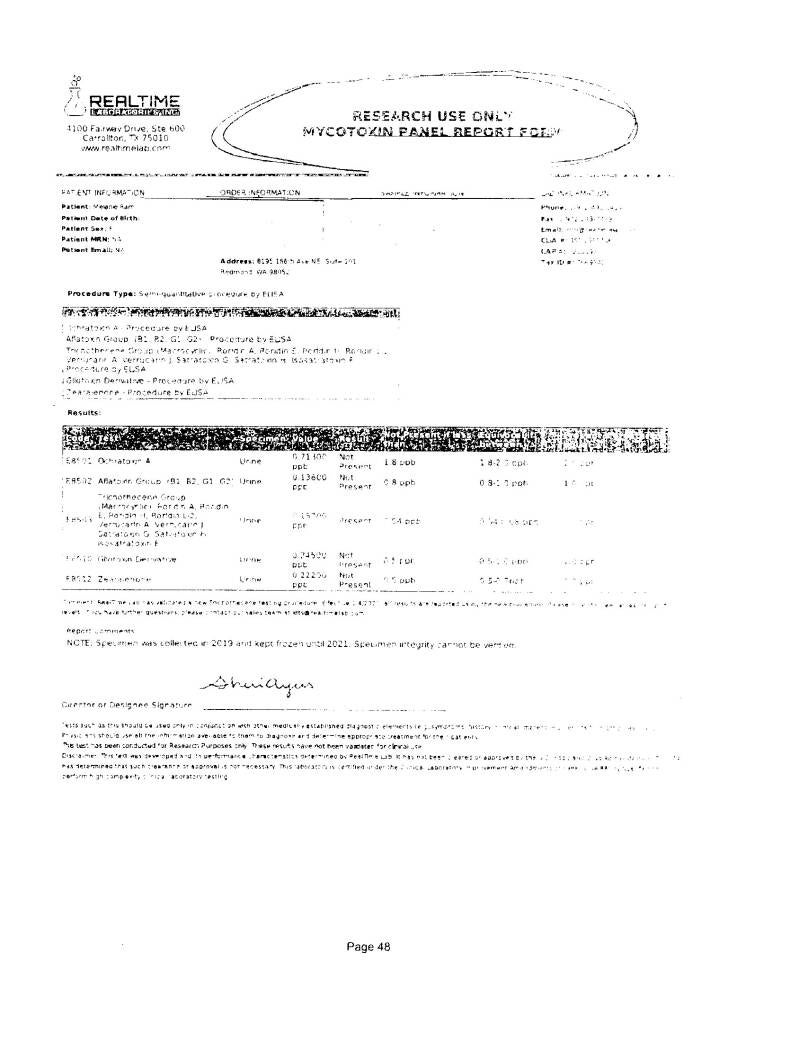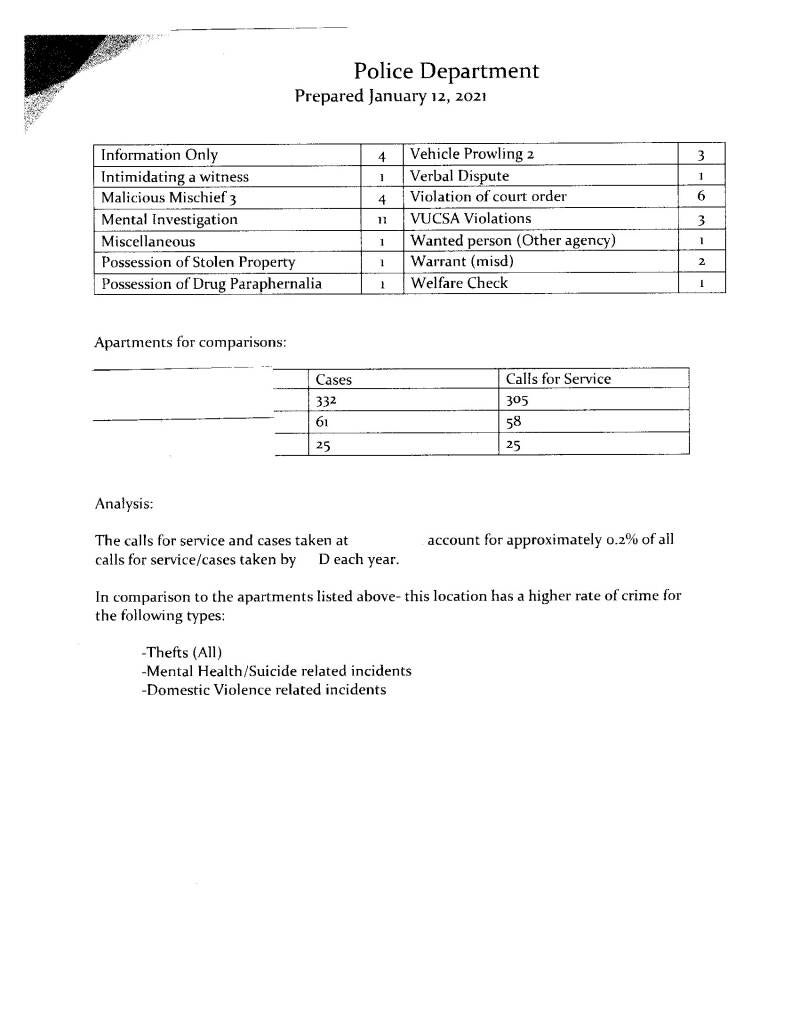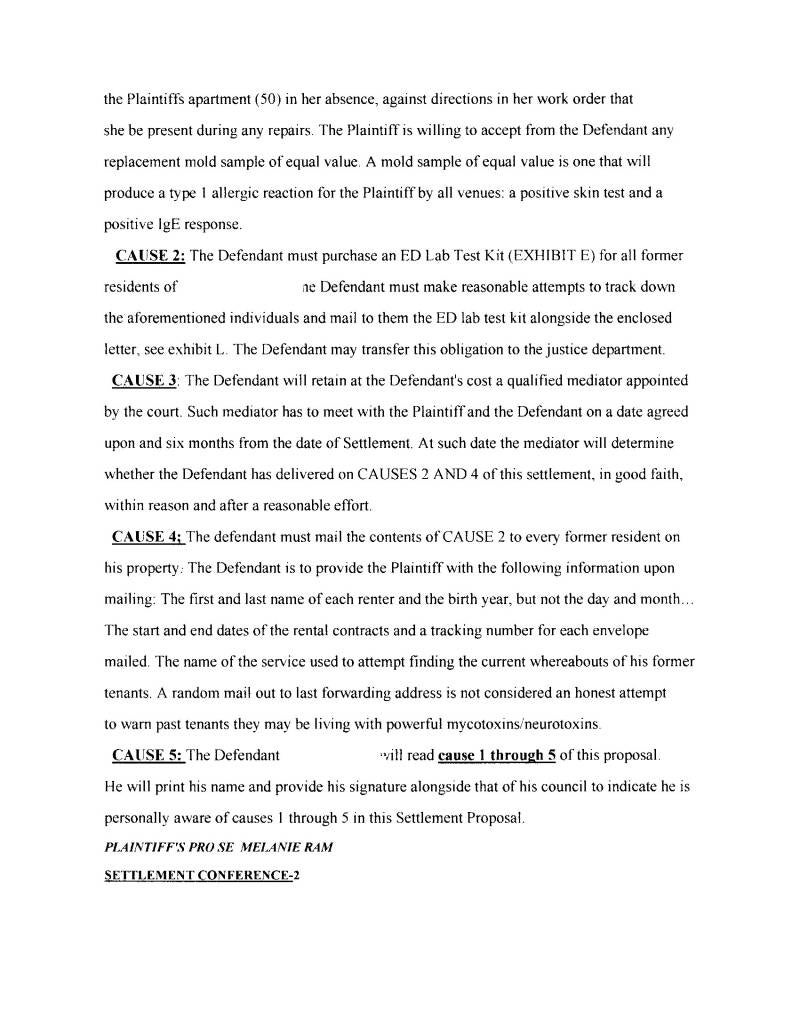The pictogram plots AGGRESSION AND SUICIDE related 911 calls in a District 6 multiplex linked to black mold. Years 2003 through 2020.
Each curve represents a different year and marks AT LEAST ONE 911 call from, or regarding the residential unit in question. Subsequently, a tenant is recorded as either AGGRESSIVE or SUICIDAL by law enforcement.
RED CURVES indicate a new identity.
BLACK CURVES mark residents who appears in police files, as either aggressive or suicidal during a prior year as well.
Please see the legend, bottom right for mouse body parts and corresponding years.
Until healthcare providers routinely offer testing in response to patients reports of potential exposure, accurate data on mycotoxin exposure remains out of reach. In WA, many practitioners currently defer testing, often citing insurance limitations.
Please keep in mind the systemic practices witnessed here undermine public safety, government awareness, and research funding opportunities (science and discovery.) I've enclosed but a minute fraction of the evidence supporting impact of exposure far beyond those directly affected by active mold proliferation.
Whatever good "we/men" it may take, I believe mycology will become a "rising science" titan.
Enclosed documentation:
1. Verified exposure to black mold toxins.
2. Healthcare report of a potential mold concern (four years prior.)
3. Laboratory findings that support long term contamination.
4. A statistical overview from local law enforcement for our protagonist structure (see pictogram.)
5. A sample of expert medical opinion.
6. One more effort to help potential victims of exposure.
A video of conditions on the property in the pictogram was collected.
Patient, provider conflicts of interest?
Although reliable tests for mycotoxin exposure are available, patients in WA often encounter providers who do not offer them, who seldom disclose whether such tests are considered or accessible. Because current regulation only provides for civil litigation in black mold exposure cases, law enforcement and legal professionals may be limited or reluctant to pursue investigations.
This gap reflects a broader disconnect between environmental health risks and institutional response. Addressing it will require interdisciplinary collaboration that brings together, medical, legal and public health stakeholders to close diagnostic and justice blind spots.
An experience begins:
The night the mold sample in the video is collected there is a mild, but clear anaphylactic shock reaction. “What does it matter now that you are out of there?” asks a distraught allergist as he is provided with the mold sample and unwavering claims of a type 1 allergic reaction. He is informed that apart from Ulocladium, the identity of the other molds in the sample is unknown. The reluctant allergist avoids using the sample for a skin test and instead orders an IGE lab test to Ulocladium, which he, alone, is certain will return negative.
A long, complex story where everything that could possibly go wrong, whether by accident or design, so does. The allergist's choice becomes inadvertently complicit to stimulating the outcome to be witnessed. Close to 3 years later, a civil suit against the property is filed, as at this point, there is still no explanation for the anaphylactic shock experienced. The revelations astound.
The case demonstrates how regulatory constraints, institutional burden, and failed diagnostic pathways, intersect at the expense of patient (community) healthcare, and scientific discovery. Eventually, an independent environmental medicine practitioner, willing to test for black mold exposure, is secured. Test results return positive for trichothecenes, zearalenone, and gliotoxins which are toxins produced by Stachybotrys (black mold,) Fusarium, Aspergillus, etc. However, environmental tests return negative for any mold problems.
Below, mycotoxin test results: trichothecenes 0.121 ppb; gliotoxins 1.667 ppb; zearalenone 0.803 ppb. All considered positive values.

Mold reported to provider years before the tests are run.

Contamination and transport suspicions arose before a doctor willing to investigate was secured. Most personal property was discarded but not before collecting and freezing a urine sample. The improvement was significant and, were it not for the unexplained anaphylactic shock reaction, the topic set aside. This body of discovery was driven by a slim margin of hope to search the property for a mold sample for another opportunity to test for type 1 allergies.
After the test results above returned positive, tests were run on the frozen sample as well. It seems trichothecenes remained in solution at 0.157 ppb. There was a heavy deposit of sediment (derived from the urine) at the bottom of the bottle, but there is no memory on whether it was stirred prior to testing. The concentration of trichothecenes is higher in the sample collected in 2018 than in the tests above (2021), though no emulsifying agents were consumed for the 2018 collection. The real concentration was likely higher. These tests indicate mycotoxins cause long term contamination.
Below, mycotoxin test results for a urine sample collected in 2018 and analyzed in 2021.

Black mold and the unsuspecting public.
The years lapsed between the discovery in the collection video, and the time the right tests were administered, indicate mycotoxins travel with the victims, and have low dissipation rates. That is, these toxins may be introduced into naive structures exponentially augmenting public hazards. By contrast, some healthcare providers propose that mycotoxins may persist in the body, or trigger secondary physiological responses, long after the initial exposure. There is an urgent need for answers. Unfortunately, with few exceptions, black mold related challenges tend to disproportionately affect low-income and working-class communities. This reality reduces the likelihood that affected individuals have access to the scientific tools -or networks- needed to fully understand and address their concerns. There is a clear need for expanding engagement and interdisciplinary research.
Street and systemic crime. Substance abuse, mental health and our neighborhoods.
Ernie, a 10+ years resident, committed suicide in 2019 (unit 321, rectangle in the pictogram.) I had contacted the Health Department in 2017, prior to vacating the property. However, despite all efforts, by the end of 2020 I had no proof of black mold exposure. This inspired a turn to public records for trends that might corroborate a suspicion of possible exposure to neurotoxins. Please see rectangles for units 314, 321, and 122 (suspicious deaths.) More information on suspected impact of exposure will be presented in the future, in video format.
At the time I moved onto the property in question, I was a UW student of Biochemistry, 3 credits short of completing my bachelor's degree. In my career as a student, I had placed in the top 2 percent on the national standardized test for organic chemistry. It does not make me a research scientist, but I am an individual with experience of exposure, and a basic understanding of biochemistry.
Some mycotoxins likely stimulate substance abuse by victims of severe exposure.
The following are topics I recommend for advanced research:
1. Some molds produce strong neurotoxins. Incognizant victims are likely to medicate effects of exposure with legal or illicit substance.
2. Deleterious reactions between mycotoxins and alcohol affect the respiratory tract. The reaction is rapid, the "initial" effects transient, and my discoveries (derived from public records) suggest their severity depends on the intensity of exposure. The reaction is unwittingly documented in the 911 files. I recommend past tenants (since at least ~2005) and possibly current long-term residents, be tested for possible exposure. The contents of the 911 building profile raise suspicions over the last two decades; at least since 2008. However, once the lawsuit was filed in January 2020, severe "remodeling" efforts began on the property. Past residents are a sound opportunity to begin a serious scientific inquiry on topic. Notes must be taken on duration of residence, and the proportion of personal property housed in the structure in question and retained in possession to date.
3. The identity of the products of reaction with alcohol and other substances must be determined. (If the Police Department engages in drug and alcohol testing upon arrest, mycotoxins and products of reactions should be added testing kits.)
4. For public safety, mycotoxin dissipation rates, and cross-contamination hazards must be determined.
Below, PD statistical analysis of 911 trends on the property.

On a related topic, in WA many large corporate structure, environmental testing companies refuse service to renters. Civil litigation subpoena prospects seem to stimulate questionable, systemic behavioral patterns. Meanwhile, our communities and the research sector lose opportunities for medical care and discovery.
Below, environmental medicine provider opinion.


The excerpt is from a deposition collected by the defendant's attorney. The environmental tests were run as well after the deposition.
No rational evidence pointing away from the property was encountered during investigation. My healthcare record prior to 2016 is consistent with toxic exposure upon taking residence. PD incidental annotations on healthcare trends in the building concur with my experience and discovery.
There is much left to add on topic; however here is neither the time nor the proper venue. Below, just another attempt to make arrangements for the welfare of residents. The property is just one sample of the scope of this socioeconomic problem. How many victims will we find at the state and national level?

And for those born for the love of learning; the future of economics. As we need bread, we need PURPOSE. Intelligent, well-trained populations are a prerequisite if our species is to survive the ensuing, highly experimental age of technological development.


